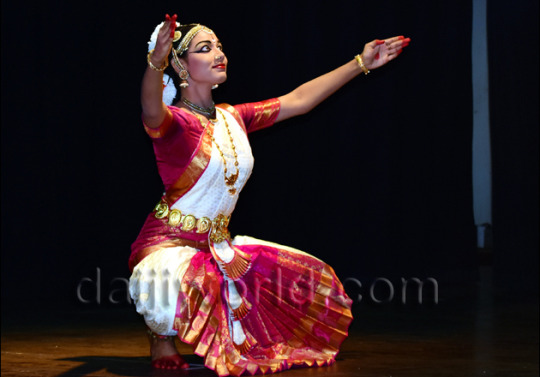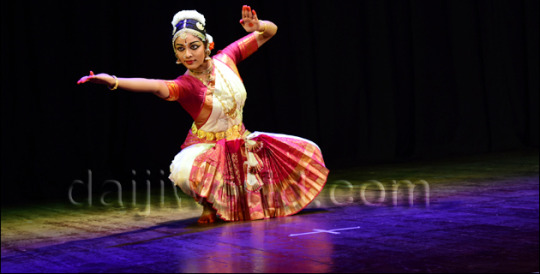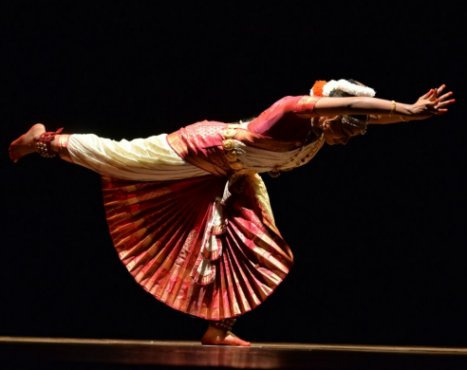#pieces in italics are entire compositions (i.e. symphonies)
Text
Classical music to listen to based on your interests
(yes, I made another list. sue me. i’m all for spreading classical music awareness. feel free to add to this list.)
If you like facts and logic - literally anything by Bach
If you like roasting people - “Leck mich im Arsch” by Mozart
If you like politics - Sinfonia Eroica (Symphony No. 3) by Beethoven
If you like invading other countries - “Ride of the Valkyries” by Wagner
If you like showing off - “Caprice No. 24″ by Paganini
If you like nature - “Finlandia” by Sibelius
If you like dancing - Slavonic Dances by Dvorak
If you like art - anything by Debussy
If you like reading - Scheherazade by Rimsky-Korsakov
If you’re classy - “The Blue Danube” by Strauss
If you like history - The Water Music by Handel
If you’re religious - A German Requiem by Brahms
If you like Star Wars/Star Trek - The Planets by Holst
If you like “All By Myself” - Piano Concerto No. 2 by Rachmaninoff
If you like crying your eyes out - “Nimrod” by Elgar
If you like the zoo - The Carnival of the Animals by Saint-Saens
If you like jazz - Jazz Suite No. 2, “Waltz No. 2″ by Shostakovich
If you’re patriotic - New World Symphony (Symphony No. 9) by Dvorak
If you like satanic rituals - The Rite of Spring by Stravinsky
If you like the burning flames of hell - Requiem in D Minor by Mozart
If you like New York City - “Rhapsody in Blue” by Gershwin
If you like sleep - “Sicilienne” by Faure
If you like Halloween - “Danse Macabre” by Saint-Saens
#music#classical music#classical#my music#music list#classic#list#this list is pretty subjective so please add to it#lick my ass by mozart has to be an all-time favorite#spooky season is approaching so you need to listen to danse macabre#pieces in italics are entire compositions (i.e. symphonies)#pieces in quotations are single songs#yes I called a piece a 'song'#hush up
5K notes
·
View notes
Text
Indian Classical Dance Recital with 5 Bible stories
Ruth Prithika is an award-winning dancer who has trained in Bharatanatyam classical dance of southern India since she was 5 years old.
This is a 12-minute solo recital with a lot of content. The full piece is about an hour, these are excerpts.
First is the list of biblical content, then the video, then the credits, then more about Ruth, then some information about the dance form.
A typical bharatnatyam recital or a complete performance routine is called a Maargam. It contains up to 9 elements - see them listed and explained at
https://kalyanikalamandir.com/bharatnatyam-maargam/
Ruth’s Maarga includes these 5 sections contextualized with Christian content. Some of this text is from her description on the Youtube page of the video. Text here in italics is from a review published at
https://narthaki.com/info/rev18/rev2185.html
1. Pushpanjali - an offering to the Almighty. It is taken from the book of Genesis, the first chapter of the first book of the Holy Bible. The dancer offers her salutations (Pushpanjali) to each of the six days of creation [day and night, sky, earth/ocean/vegetation, sun/moon/stars, creatures, people].
Composition: Guru Vidyashree Radhakrishna; Raaga: malika; Tala:Adi;
2. Varnam - It begins with a short sloka , which describes Lord Jesus as the protector of the universe, a friend of the needy, a compassionate soul. The first half depicts the birth and the early life of Jesus, while the second half is based on His ministries and miracles.
Composition: Guru Vidyashree Radhkrishna; Raaga: Simhendra Madhyama; Tala:Adi
Varnam, the centrepiece of the recital, followed the path of bhakti that described the saviour, Jesus. The pallavi says, "Show me your mercy, grant me the joy of happiness." An interpretation of the pallavi described the different crisis an ordinary human being undergoes, be it physical, metaphysical or spiritual. In times like these, Lord Jesus is our helping hand. The anupallavi described Jesus as the loving son, born to Mary and Joseph. The second half of the varnam says, "I am eagerly waiting to listen to your preaching, grant these keen ears of mine a chance to listen to your remarkable words." It goes on to describe his miracles and how his teachings inspire the devotees.
3. Padam - a unique abhinaya composition which is structured on the conversation of Jesus with a Samaritan woman (scrutinized as an untouchable). It is portrayed by the dancer stepping into the shoes of a Samaritan woman where she goes on to accept Jesus as her Guru.
Composition: Guru Vidyashree Radhakrishna; Raaga:Malika; Tala: Adi
4. Keerthanam - The cross symbolizes love. It is considered to be a gift of Jesus to mankind as he takes away all our sins, through His sacrifice, thereby drawing us closer to the Creator. It is depicted in two episodes - one, the crucifixion of Jesus and the other, how the entire folklore receives the cross as a symbol of his sacrificial love.
Composition: Mr.Samuel Saadhu; Raaga: Desh; Tala: Adi
A beautiful interpretation this came by innovating a new hasta [single-hand symbolic gesture] in Bharatanatyam to represent the cross,
5. Thillana - based on the resurrection of Christ as described in Luke 24. The recital, thus concludes with the message that Christ has risen and His spirit dwells among His people.
Composition: Dr. E.V.S. Maben; Raaga:Sumanesha Ranjani; Tala:Adi (Khanda)
The words [for all the songs were] penned by her father, Dr. Suranjan Maben. The thillana was based on the resurrection of Christ as described in Luke 24. The dancer herself, peeps into the burial tomb of Jesus, and is overjoyed by the message of the angels who says that he is not here, but he dwells in our spirits. The dancer concluded the thillana on Easter day that Christ is risen and is dwelling in each one of us.
The 5 sections, composed by 3 different composers, are in 4 different raags and all use the Adi tala, a popular 8-beat cycle in Carnatic music.
youtube
+++
Credits:
Conceptualization: Dr. E.V.S. Maben
Choreography: Guru Vidyashree Radhakrishna
Music and Mridangam: Vid. G Gurumurthy, Bengaluru
Natuvangam*: Guru Vidyashree Radhakrishna
Vocal: Vid. Balasubramanya Sharma
Flute: Vid. Jayaram Kikkeri
Sitar: Vid. Sumarani
Violin: Vid.Pradesh Achar
Rhythm pad: Vid: Karthik Dathar
Sound Recording: Prabhat Studios, Bengaluru
Presented by: Ruth Prithika
Email Id: [email protected]
Facebook: https://www.facebook.com/ruth.prithika
* Natuvangam is a pair of small cymbals on rigid cords. The one in the right hand is made of brass and the one in left is of steel. The intricate rhythms are connected to the footwork of the dancer.
Read more at
https://www.thehindu.com/entertainment/music/in-conversation-with-nattuvanar-ksbalakrishnan/article24151554.ece

+++
In a FB post, Ruth wrote,
"Bharatanatyam is a dance form that symbolizes unity in diversity within the body. The dancer's body is like a spectrum of colors whose movements are painted across the canvas which is the stage, causing the spectator's gaze to wander all over the surface of the canvas. The unique expressions of the eyes, the hands, the legs and the feet synchronize with the music to create a perfect symphony."
See a terrific 1-minute video, made by Ruth (I think), that shows this at
https://www.facebook.com/NatyaKalaConference/posts/156418545717482
This dance form has 55 root mudras (symbolic gestures), and some can be embellished. Read more at
https://en.wikipedia.org/wiki/List_of_mudras_(dance)#Bharatanatyam
+++
Ruth Prithika, daughter of Dr Roshan Maben and Dr E V S Maben is currently pursuing computer science engineering at NMAMIT, Nitte. She has been learning this divine form of art since the age of five. She has successfully completed her vidwath exam in Bharatanatyam and junior grade in carnatic music. She has performed with Gaana Nrithya Academy at various stages in and around the country. She has also performed at Doordarshan Studio in Delhi for Prasar Bharathi during ABU dance festival held in 2016. She has won various awards in several classical and solo dance competitions held at district, state and national level. She has received training in Kathak and Odissi dance forms through the workshops organised by the academy.
Ruth also studied computer science at University College Dublin, her current location.
Ruth performed this piece for a large gathering of Christians for Easter 2018 in her town of Mangaluru.
https://www.daijiworld.com/news/newsDisplay.aspx?newsID=502763
Mangalore, officially known as Mangaluru, is the second largest city and major port of the Indian state of Karnataka. See a map and more at
https://en.wikipedia.org/wiki/Mangalore#Music_and_dance
The songs are sung in Kannada, a language spoken by about 57 million people in Karnataka and beyond.
https://en.wikipedia.org/wiki/Kannada
A few photos from the news article above:

+++

+++

+++
From an article and interview with Ruth about the performance above in the Times of India:
According to Ruth, it was her father who conceptualized the idea and penned the lyrics. Her music teacher gave the lyrics a poetic form, got the music recorded from internationally-recognized artists in Bengaluru, and choreographed the performance.
Vidyashree, the choreographer, said the biggest challenge was that unlike depicting Shiva and Krishna, whose mudras (symbolic gestures] are mentioned in Bharatanatyam, she had to create mudras and costumes suiting Jesus. “We had to start from scratch. We were able to do it, and I am glad people appreciated it.”
Read more at:
http://timesofindia.indiatimes.com/articleshow/63571445.cms?utm_source=contentofinterest&utm_medium=text&utm_campaign=cppst
+++
See a 40-minute TV interview (in the Kannada language) with Ruth about the dance. Guru Vidyashree Radhakrishna, the choreographer, is also part of the interview.
youtube
+++
A publicity poster for the event, from
http://www.mangaloretoday.com/main/Kristha-Patha-Christ-based-Bharathanatyam-repertoire-in-city-April-1.html

+++
A note about the choreographer:
Guru Vidyashree Radhakrishna established the institution in 1994, choreographed several solo, group and thematic ballets and performed all over India and abroad. Many of her students have won state, national and International level competitions and received scholarships and awards. She is a graded artiste of Doordarshan. Having expertise in both Bharatanatyam and carnatic vocal, she has not only conceptualized and presented several child friendly ballets, but also scripted and choreographed concept based traditional repertoires. As a director, she has organized several festivals such as Aarohana, Nrityadhara and Nrityaniranthara under the banner of Gaana Nritya Academy .
http://www.mangaloretoday.com/main/Kristha-Patha-Christ-based-Bharathanatyam-repertoire-in-city-April-1.html
+++
A review of the dance recital is at
https://narthaki.com/info/rev18/rev2185.html
Here are two photos:

+++

+++
Some information on the mudras from
https://en.wikipedia.org/wiki/List_of_mudras_(dance)
The Abhinaya Darpa (a descriptive primer for dancers) mentions that the dancer should sing the song by the throat, express the meaning of the song through hand gestures, show the state of feelings in the song by eyes, and express the rhythm with his or her feet.
From the Natya Shastra, a text on the arts, this beautiful quotation and translation is often quoted by Indian classical dance instructors:
"Yato hastastato drishtihi"..."Where the hand is, the eyes follow""
Yato drishtistato manaha"..."Where the eyes go, the mind follows""
Yato manastato bhavaha"..."Where the mind is, there is the feeling""
Yato bhavastato rasaha"..."Where there is feeling, there is mood/flavour, sweetness (i.e., appreciation of art; aesthetic bliss)"
So vast are the subtleties expressed in the hand gestures of hasta that the vastness of what being human entails, and perhaps even what the entire universe contains, might be expressed by the dancer.
2 notes
·
View notes